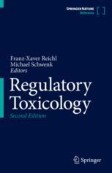Search
Search Results
-
Fit-for-purpose based testing and validation of antibodies to amino- and carboxy-terminal domains of cannabinoid receptor 1
Specific and selective anti-CB 1 antibodies are among the most powerful research tools to unravel the complex biological processes mediated by the CB 1 ...

-
Development, Comparison, and Qualification of Predictive Pharmaceutical Stability Models Using Independent Statistical Tools
PurposeThe predictive modeling approach to assess long-term stability performance of pharmaceuticals by using short-term accelerated stability is of...

-
Fit-for-Purpose Validation and Establishment of Assay Acceptance and Reporting Criteria of Dendritic Cell Activation Assay Contributing to the Assessment of Immunogenicity Risk
Validation of key analytical and functional performance characteristics of in vitro immunogenicity risk assessment assays increases our confidence in...

-
Microfluidic models of the neurovascular unit: a translational view
The vasculature of the brain consists of specialized endothelial cells that form a blood-brain barrier (BBB). This barrier, in conjunction with...

-
Validation of Animal Models
Animal research provides a major contribution to the discovery of new compounds and its mechanism of action. It also deals with the pharmacokinetics...
-
Towards best use and regulatory acceptance of generic physiologically based kinetic (PBK) models for in vitro-to-in vivo extrapolation (IVIVE) in chemical risk assessment
With an increasing need to incorporate new approach methodologies (NAMs) in chemical risk assessment and the concomitant need to phase out animal...

-
Macroscopic resting-state brain dynamics are best described by linear models
It is typically assumed that large networks of neurons exhibit a large repertoire of nonlinear behaviours. Here we challenge this assumption by...

-
Validating models of sensory conflict and perception for motion sickness prediction
The human motion perception system has long been linked to motion sickness through state estimation conflict terms. However, to date, the extent to...

-
Low-dimensional models of single neurons: a review
The classical Hodgkin–Huxley (HH) point-neuron model of action potential generation is four-dimensional. It consists of four ordinary differential...

-
Toxicokinetic Models
Toxicokinetics describes by means of mathematical functions the time- and dose-dependent processes of absorption, distribution, and elimination of a...
-
Five multivariate Duchenne muscular dystrophy progression models bridging six-minute walk distance and MRI relaxometry of leg muscles
The study aimed to provide quantitative information on the utilization of MRI transverse relaxation time constant (MRI-T 2 ) of leg muscles in DMD...

-
Toxicokinetic Models
Toxicokinetics describes by means of mathematical functions the time- and dose-dependent processes of absorption, distribution, and elimination of a...
-
Pharmacokinetic Models for Inhaled Fluticasone Propionate and Salmeterol **nafoate to Quantify Batch-to-Batch Variability
Advair Diskus is an essential treatment for asthma and chronic obstructive pulmonary disease. It is a dry powder inhaler with a combination of...

-
Implementation of non-linear mixed effects models defined by fractional differential equations
Fractional differential equations (FDEs), i.e. differential equations with derivatives of non-integer order, can describe certain experimental...

-
Human Brain Penetration Prediction Using Scaling Approach from Animal Machine Learning Models
Machine learning (ML) approaches have been applied to predicting drug pharmacokinetic properties. Previously, we predicted rat unbound...

-
Assessing the performance of QSP models: biology as the driver for validation
Validation of a quantitative model is a critical step in establishing confidence in the model’s suitability for whatever analysis it was designed....

-
Towards a comprehensive assessment of QSP models: what would it take?
Quantitative Systems Pharmacology (QSP) has emerged as a powerful ensemble of approaches aiming at develo** integrated mathematical and...

-
Adapted large language models can outperform medical experts in clinical text summarization
Analyzing vast textual data and summarizing key information from electronic health records imposes a substantial burden on how clinicians allocate...

-
Best Practices for Integration of Dissolution Data into Physiologically Based Biopharmaceutics Models (PBBM): A Biopharmaceutics Modeling Scientist Perspective
Dissolution is considered as a critical input into physiologically based biopharmaceutics models (PBBM) as it governs in vivo exposure. Despite many...

-
Generalizability of polygenic prediction models: how is the R2 defined on test data?
BackgroundPolygenic risk scores (PRS) quantify an individual’s genetic predisposition for different traits and are expected to play an increasingly...

